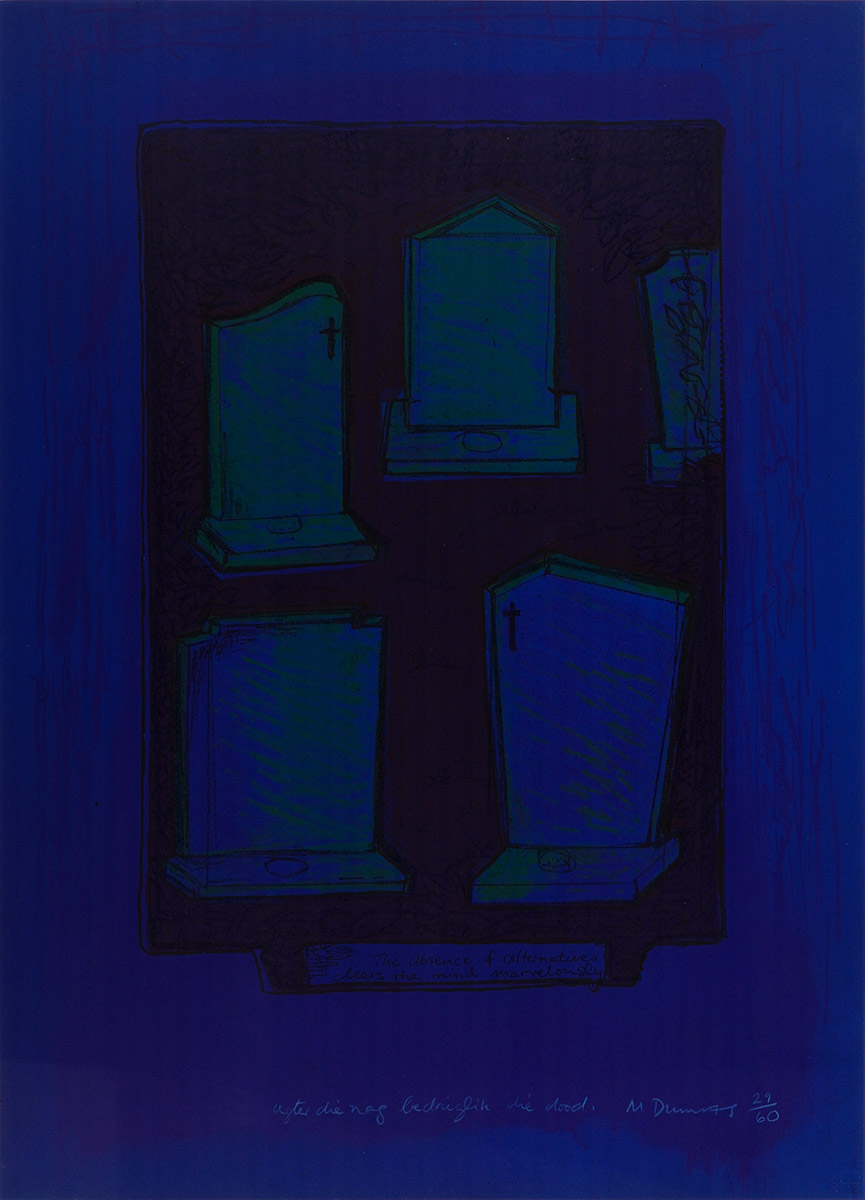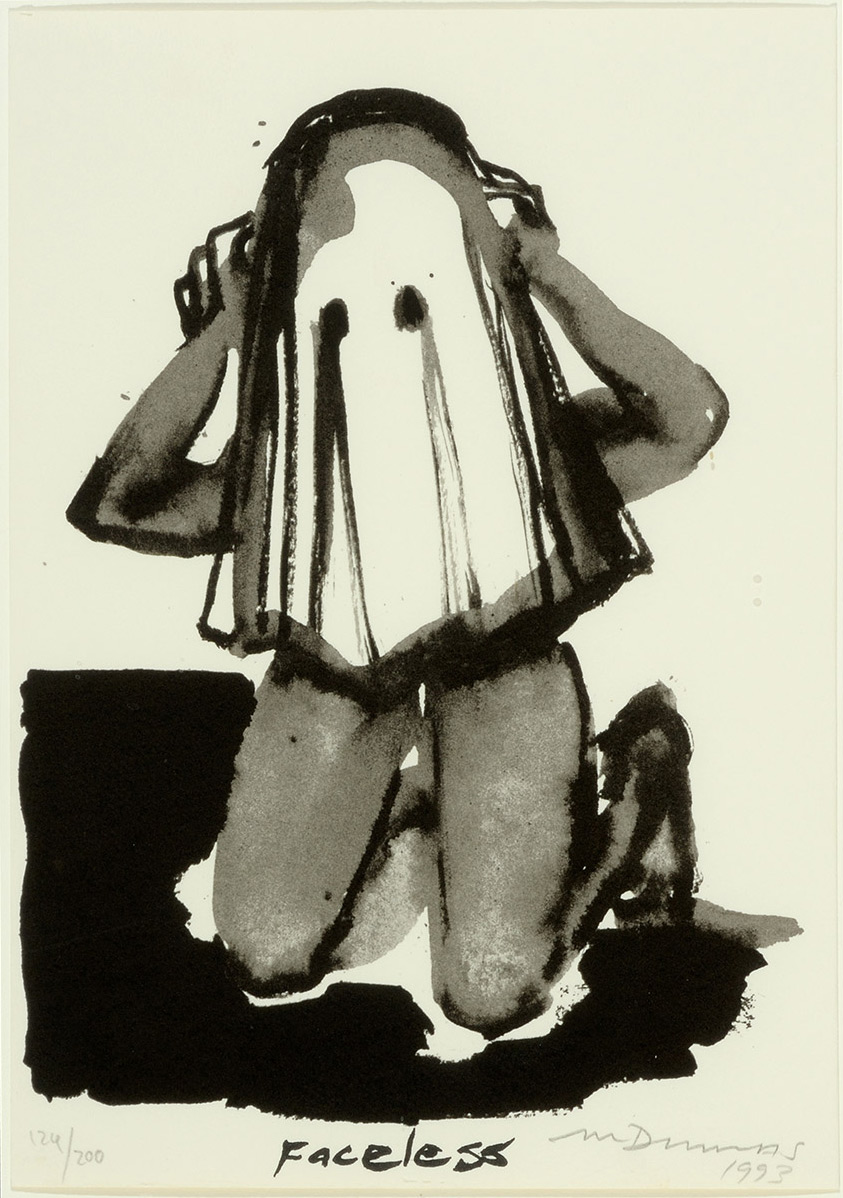Marlene DUMAS (b. 1953)
Agter Die Nag Bedrieglik Die Dood
year unknown
lithograph in colours
edition 29/60
70.3 x 53 cm
A sharp-shooting meditation on mortality’s capacity to energise the living, the brilliant blue of this lithograph defies the gloominess of its subject matter – an assembly of blunt tombstones within a hovering dark shape that repeats their form. The work’s meaning is further brought home by its title ‘Agter Die Nag Bedrieglik Die Dood’, which translates as, ‘Behind the night, deceptively death’, and by the text in the image, which reads: ‘The absence of alternatives clears the mind marvelously.’
Faceless
1993
silkscreen printed on watercolour paper
36 x 28 cm
Accompanying her 1993 solo exhibition at the ICA in London, Dumas released this fine limited art edition of two hundred hand-signed, dated and hand-numbered silkscreen prints.
Dumas’ paintings are profoundly sensual, frequently frankly erotic, exploring themes of sexuality, love, death and shame. Central to her practice has been the human figure – often naked or partially clothed. Painted from photographs, Dumas’ models strike Playboy-style poses: backside in the air, or crouched down naked in high-heeled boots, face raised suggestively, or peeling off one stocking in a silk-gloved hand. Yet, in this work, Faceless, the face and breasts of the female figure are covered up as if in a gesture of shame. Refracting the viewer’s desire for total exposure back at him/her/them, it is a work that poses questions about the potential for abuse in the power of the gaze.
BIOGRAPHY
Marlene Dumas is regarded as one of the most influential and widely admired painters working today. She was born in Cape Town. From 1972 to 1975, she attended the University of Cape Town, where she studied for a BA in Visual Arts. She then completed her studies in Haarlem, in the Netherlands.
She has lived and worked in Amsterdam since 1976. From 1978, she has exhibited internationally. In 1995, she represented Holland in the Venice Biennale; in 1996, the Tate Gallery exhibited a selection of her works on paper; in 2007–8, the Iziko South African National Gallery exhibited Marlene Dumas: Intimate Relations; in 2015 the Stedelijk Museum in Amsterdam exhibited a retrospective of her work; in 2021–22 the Musée d’Orsay in Paris exhibited a series of paintings by Dumas inspired by French poet, essayist, art critic and translator Charles Baudelaire’s (1821 – 1867) Paris Spleen. This Baudelaire project was born out of the artist’s collaboration with the writer and translator Hafid Bouazza (1970 – 2021), with whom she had previously produced an edition of Venus and Adonis by Shakespeare. In 2022–23, the Palazzo Grassi in Venice, presented a solo exhibition dedicated to Dumas as part of a cycle of monographic shows dedicated to major contemporary artists.
In the past, Dumas produced paintings, collages, drawings, prints and installations. She now works mainly with oil on canvas and ink on paper. The sources she uses for her imagery are diverse and include newspaper and magazine cuttings, personal memorabilia, Flemish paintings, and Polaroid photographs.
The majority of her works may be categorised as ‘portraits’, but they are not portraits in the traditional sense. Rather than representing an actual person, they represent an emotion or a state of mind. Gestural, fluid, and frequently spectral, Dumas’s works reframe and re-contextualise her subjects, exploring the boundaries between public and private selves. Notable figures Dumas has depicted in her work include Alan Turing, Michelle Obama, Naomi Campbell, Amy Winehouse and Princess Diana.
Themes central to Dumas’ work include race and sexuality, guilt and innocence, violence and tenderness.



